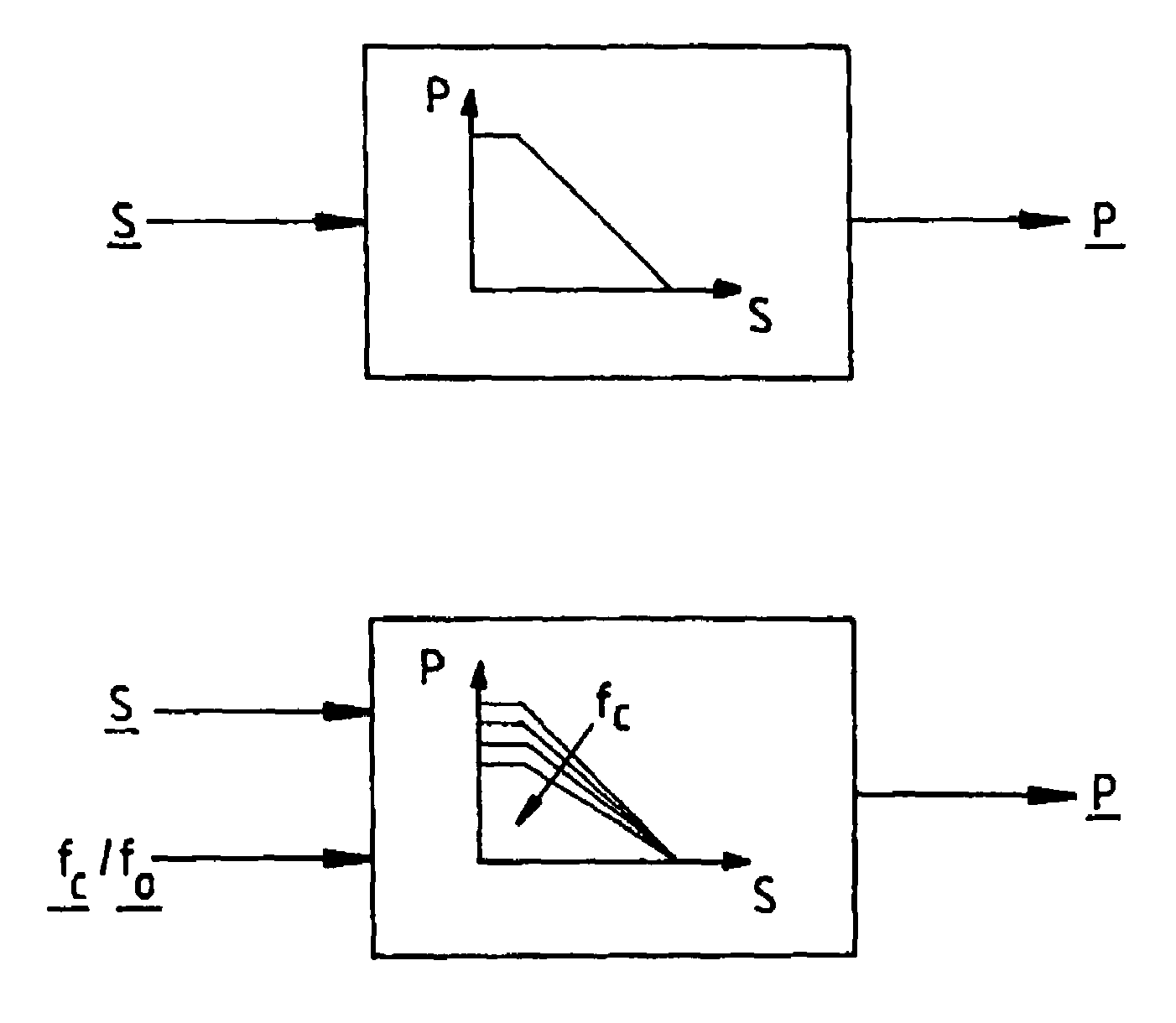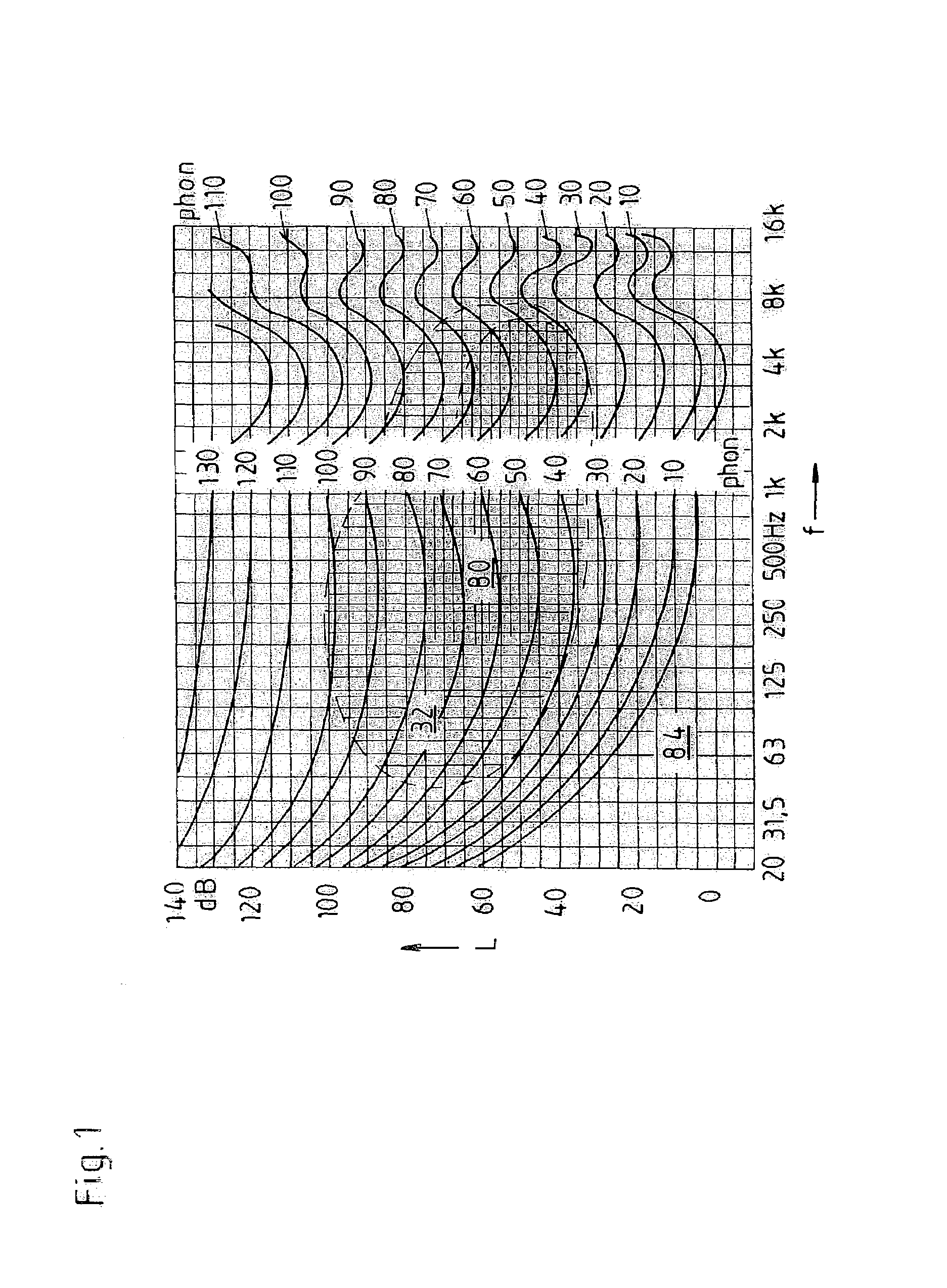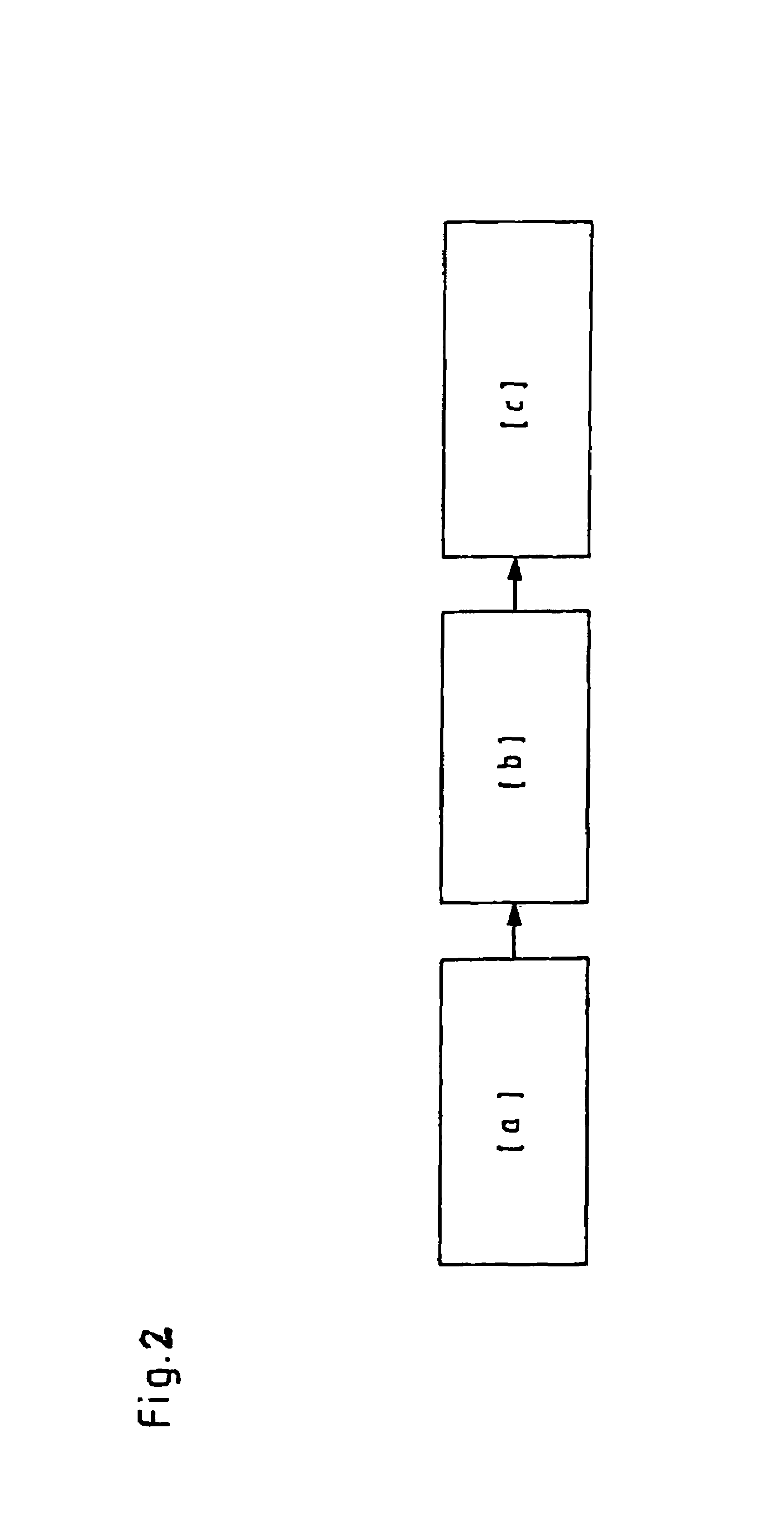Method of adjusting filter parameters and an associated playback system
- Summary
- Abstract
- Description
- Claims
- Application Information
AI Technical Summary
Benefits of technology
Problems solved by technology
Method used
Image
Examples
Embodiment Construction
[0050]Audio playback system 100 illustrated in FIG. 3 is used for playback of audio signals in the interior of a motor vehicle, the audio signals being generated by various audio sources 10, 12 such as a CD (compact disc), a radio or the like.
[0051]Playback system 100 has a loudspeaker device 50 and an audio processor 20 situated in the signal path between audio sources 10, 12 and loudspeaker device 50, this processor having two freely adjustable digital equalizers 22, 24 by which the signals of different audio sources 10, 12 may be sent to loudspeaker device 50. More than two equalizers 22, 24 may of course also be provided here. For adjusting the filter parameters, in particular for adjusting the mid-frequency, a control processor 30 sends suitable filter parameters to audio processor 20 via a control bus 34.
[0052]For determining and / or measuring the frequency response of the present audio system in the interior of a vehicle (=method step [a] according to FIG. 2), playback system ...
PUM
 Login to View More
Login to View More Abstract
Description
Claims
Application Information
 Login to View More
Login to View More - R&D
- Intellectual Property
- Life Sciences
- Materials
- Tech Scout
- Unparalleled Data Quality
- Higher Quality Content
- 60% Fewer Hallucinations
Browse by: Latest US Patents, China's latest patents, Technical Efficacy Thesaurus, Application Domain, Technology Topic, Popular Technical Reports.
© 2025 PatSnap. All rights reserved.Legal|Privacy policy|Modern Slavery Act Transparency Statement|Sitemap|About US| Contact US: help@patsnap.com



